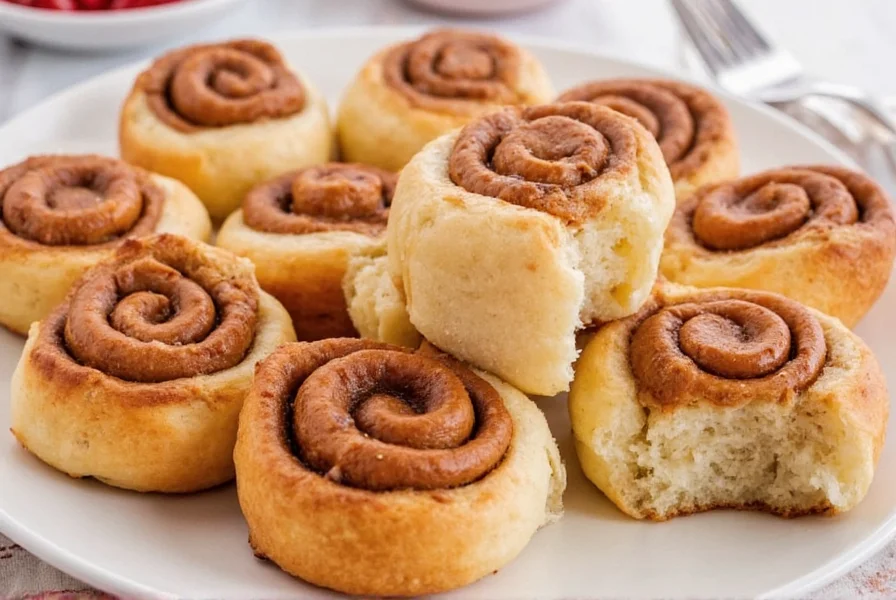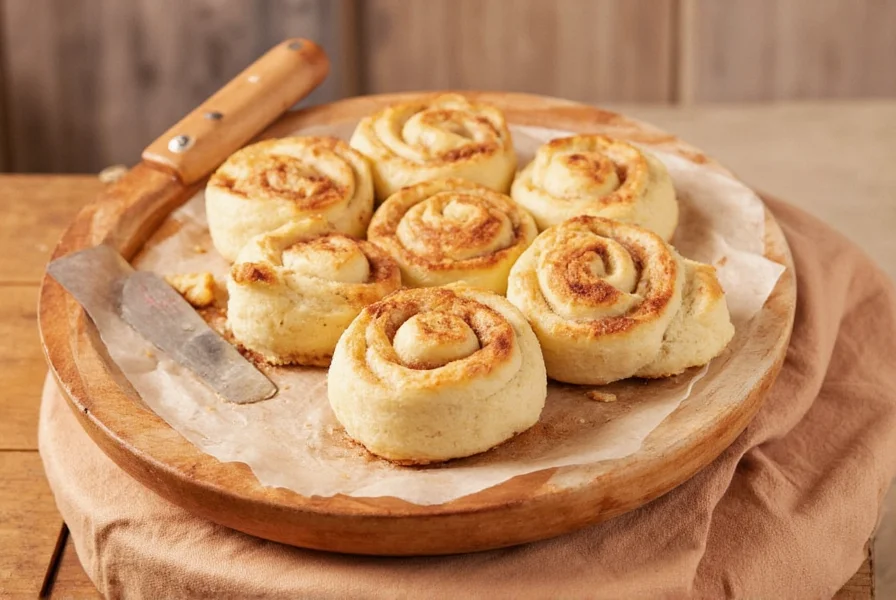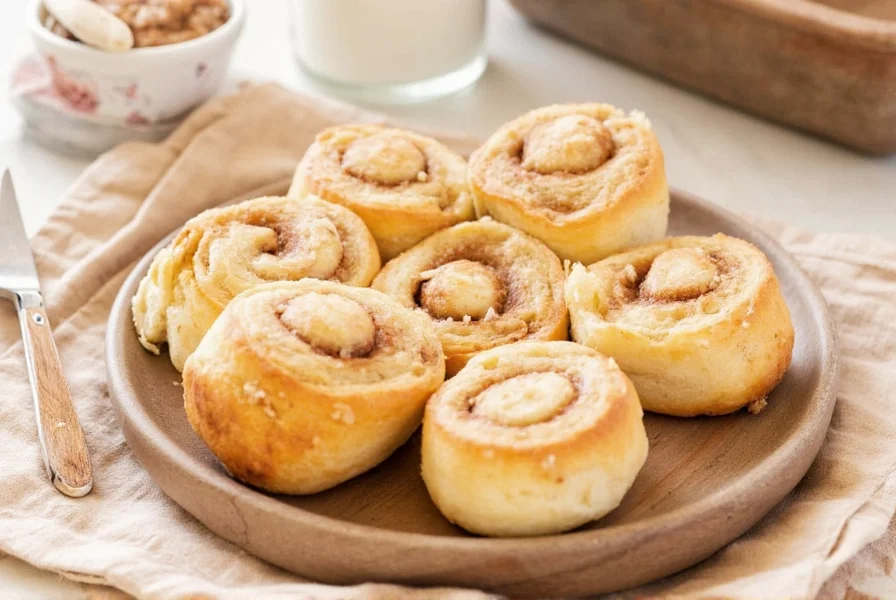Making perfect homemade cinnamon rolls from scratch is a rewarding baking project that fills your kitchen with irresistible aromas. Unlike store-bought versions, homemade cinnamon rolls offer superior texture, richer flavor, and the satisfaction of creating something truly special. This guide provides everything you need to know for consistently excellent results.
The Science Behind Perfect Cinnamon Roll Dough
Understanding the chemistry of your dough makes all the difference in achieving that signature soft, pillowy texture. The yeast needs proper hydration and warmth to activate without killing the microorganisms. Room-temperature milk (around 110°F or 43°C) provides the ideal environment. Too hot, and you'll kill the yeast; too cold, and activation will be sluggish.
When measuring flour, use the spoon-and-level method rather than scooping directly with your measuring cup. This prevents compacting too much flour into your dough, which leads to dense, dry rolls. For best results, consider weighing your flour (approximately 120-125 grams per cup) for consistent measurements.
Essential Ingredients and Their Roles
Each component in your homemade cinnamon rolls recipe serves a specific purpose:
| Ingredient | Function | Substitution Options |
|---|---|---|
| Active dry yeast | Leavening agent for rise | Instant yeast (use 25% less) |
| Bread flour | Higher protein for structure | All-purpose flour (slightly less chewy) |
| Unsalted butter | Flakiness and flavor | Vegetable shortening (less flavor) |
| Heavy cream | Richness in frosting | Milk (thinner consistency) |
Step-by-Step Baking Process
Follow these detailed steps for flawless homemade cinnamon rolls every time:
Dough Preparation
Dissolve yeast in warm milk with a teaspoon of sugar. Wait 5-10 minutes until foamy. In a separate bowl, combine flour, remaining sugar, salt, and melted butter. Mix wet and dry ingredients until a shaggy dough forms. Knead for 5-7 minutes until smooth and elastic. Properly developed dough will pass the "windowpane test"—when stretched thin, it should be translucent without tearing.
First Rise
Place dough in a lightly greased bowl, cover with plastic wrap, and let rise in a warm spot until doubled in size (about 1-1.5 hours). The ideal temperature for proofing is 75-80°F (24-27°C). Don't rush this step—proper fermentation develops flavor complexity.
Filling and Shaping
Roll the risen dough into a 16x12 inch rectangle. Spread softened butter evenly, then sprinkle with the perfect cinnamon-sugar ratio: 1 cup brown sugar to 3 tablespoons cinnamon. Roll tightly from the long side, pinch seam to seal, and cut into 12 equal pieces using dental floss for clean slices.

Second Rise and Baking
Place rolls in a greased 9x13 inch pan, cover, and let rise until nearly doubled (45-60 minutes). Bake at 350°F (175°C) for 22-25 minutes until golden brown. The internal temperature should reach 190°F (88°C). Overbaking causes dryness, while underbaking leaves doughy centers.
Troubleshooting Common Cinnamon Roll Problems
Even experienced bakers encounter issues with homemade cinnamon rolls. Here's how to solve frequent problems:
- Tough rolls: Over-kneading or too much flour—measure flour carefully and stop kneading when dough is smooth
- Flat rolls: Over-proofed dough—watch rising time carefully and don't exceed recommended temperatures
- Filling leaking out: Roll too tightly or insufficient sealing—use proper rolling technique and pinch seams
- Dry texture: Overbaking or incorrect oven temperature—use an oven thermometer and check early
Delicious Variations to Try
Once you've mastered the basic recipe for homemade cinnamon rolls, experiment with these popular adaptations:
Overnight cinnamon rolls: After shaping, refrigerate rolls in the pan overnight. In the morning, let them sit at room temperature for 30 minutes before baking. This method develops deeper flavor and fits busy schedules.
Gluten-free cinnamon rolls: Use a quality gluten-free flour blend with xanthan gum. Increase liquid slightly as GF flours absorb more moisture. Let dough rest 10 minutes after mixing for better texture.
Vegan cinnamon rolls: Substitute dairy with plant-based alternatives—almond milk, vegan butter, and replace egg with flax egg (1 tbsp ground flax + 3 tbsp water).

Perfect Cream Cheese Frosting Formula
The ideal frosting balances sweetness with tang. Combine 8 oz softened cream cheese, 6 tbsp softened butter, 2 cups powdered sugar, 1 tsp vanilla, and a pinch of salt. Beat until smooth—overbeating incorporates too much air, making frosting runny. For thicker consistency, refrigerate frosting briefly before applying.
Storage and Reheating Techniques
Homemade cinnamon rolls maintain freshness for 2 days at room temperature in an airtight container. For longer storage, freeze baked (unfrosted) rolls for up to 3 months. Thaw overnight in the refrigerator, then warm in a 300°F (150°C) oven for 10 minutes before adding frosting.
Revive stale rolls by microwaving for 10-15 seconds with a cup of water nearby to add moisture. Never microwave without moisture control—this creates tough, rubbery texture.











 浙公网安备
33010002000092号
浙公网安备
33010002000092号 浙B2-20120091-4
浙B2-20120091-4